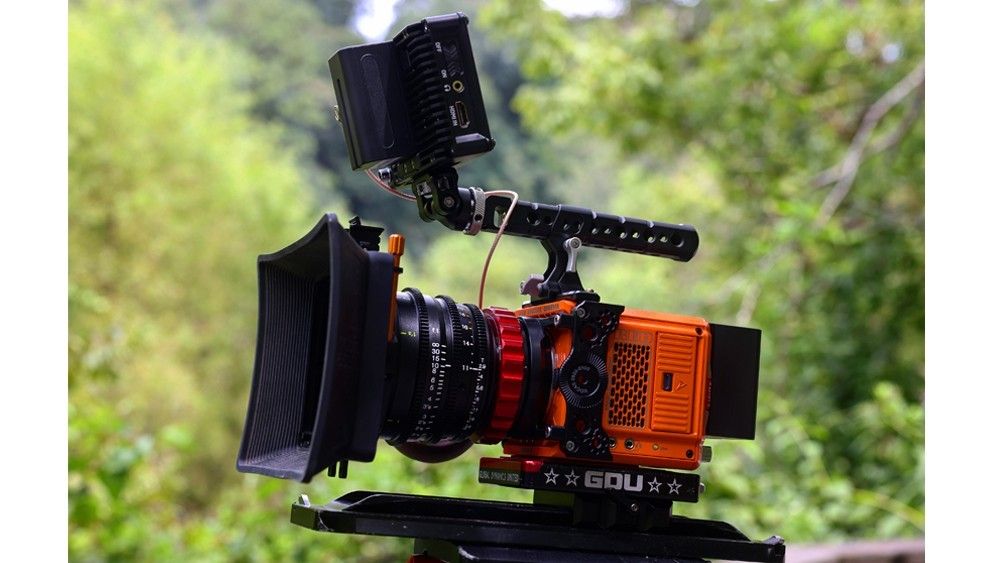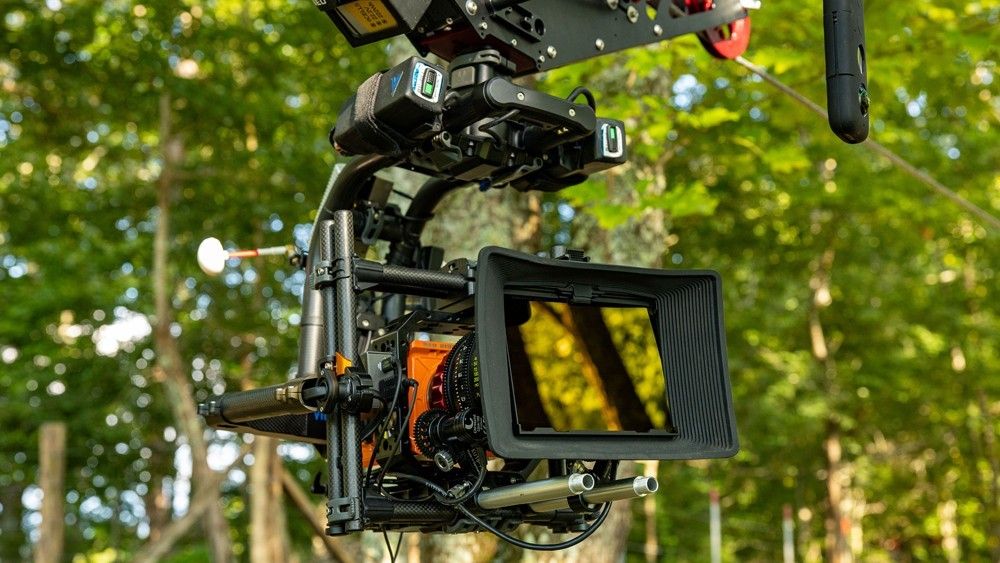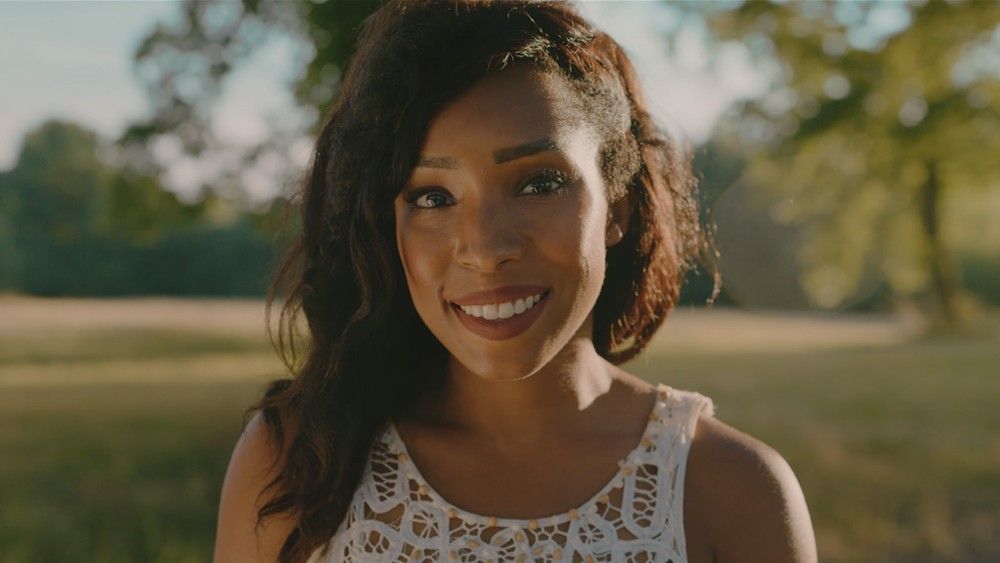
RED's new Komodo camera inches towards its official release. Here's what one of its early adopters has to say about it.
Komodo was teased over a year ago. The Super 35 6K camera marks RED's jump into a much smaller form factor which is sure to appease many filmmakers. The company started to ship its white Stormtrooper version which means the black model that will go out to the general public is on the horizon.
No Film School has been keeping you up to date with all of its features, including the cine-friendly global shutter, phase detection autofocus, anamorphic support, and price tag under $6K.
Prior to its official release, RED rolled out the camera – with some pretty cool colors – to anyone who wanted to be part of the beta testing process. One of the filmmakers who climbed onboard is Tim Daust of Reelmind Studios. We reached out to him to learn more about the camera's capabilities and to see where it falls among other RED cameras.

NFS: What got you into filmmaking?
Tim Daust: Movies were always a huge part of my life as a child. They provided me an escape from reality. For those few hours, I was in that world and it was magical. All the usual films stand out from Star Wars to ET to Aliens to Ferris Bueller. Haha! Then in 1993, my life was changed forever by the release of Jurassic Park. I saw the movie 33 times in the theater and from then on, I knew filmmaking was my future.
NFS: “Clever Girl.” Definitely an all-time Spielberg classic. Your work spans genres but you also shoot, edit, and do in visual effects. Do you think today's filmmakers should be more well-rounded creators instead of specializing in one thing?
TD: Absolutely. Even more so with smaller crews being a necessity right now. Throughout my career, I’ve had people tell me the only way to be successful would be to specialize in one thing and niche myself in. Maybe it’s my ADHD, maybe it’s my passion and respect for all aspects of filmmaking, but that just isn’t who I am.
I believe it’s really important for us to at least understand all parts of the process, but there’s nothing wrong with loving certain skill sets. The downside is that can prevent you from ever becoming a master at any of them. The key is knowing when it’s important to hire someone better than you. That’s the skill.

NFS: Yes. Surrounding yourself with people who are experienced at their craft. Did the pandemic affect your work?
TD: Like a lot of us, this year crushed our momentum. Prior to the shutdown, I was prepping a few big projects. Two large VFX projects and a series of videos for a well-known financial institution. I even had a short film that I was going to DP in March wiped off the calendar.
NFS: Have you been finding anything in the meantime?
TD: Currently I’ve been spending my time working in my studio. Between a few post-production jobs and product photography, I’ve been able to keep the skills up. I’ve taken the isolation time to continue to develop new skills, too, which has been a true blessing. We often can’t find the time to learn new things as much as we would like.
NFS: You’re an early adopter of digital technology, especially RED. Any initial thoughts when you first picked up Komodo?
TD: My initial thoughts were… "Man, this thing is so tiny!" and "I can’t believe my dream camera finally exists." After using it the first time, I knew the camera fit perfectly into the RED ecosystem. My brain couldn’t stop thinking of the ways this camera would work for specialized shots and rigging options that its larger counterparts made difficult or often nearly impossible.

NFS: Jarred Land talked about the history of the camera’s development and how the concept started out as a better crash camera. That obviously changed. From your perspective, what kind of productions do you see yourself using Komodo on?
TD: I think the market is altering it for sure. Jarred’s intention was to make a camera that didn’t cannibalize the other cameras in the lineup, but instead, fit perfectly into the ecosystem. The Komodo wasn’t intended to be an A cam but a “utility” camera. I call it the Michael Bay GoPro.
NFS: Hahaha. That’s pretty funny.
TD: The camera fits so well into the lineup that it can be hard to tell the difference between the images you get from it and its bigger brothers. I already have a Weapon CF Helium and DSMC2 Gemini. My intention is to use Komodo in ways I can’t use the others. My intention is to keep it small when possible and that’s the main attraction for me.
NFS: You’ve been rolling out different Komodo tests for weeks now via your YouTube channel. How did that come about?
TD: Yes, my 5-part series comparing the Komodo to my Helium and Gemini all started because people really wanted to know how it compares. People were really concerned with how this new camera will affect them owning the other ones. I waited an entire month of owning the camera before ever even putting it side-by-side with ANY other camera. I did this on purpose for myself.
So really these tests began as a personal exploration to be able to tell people what my opinion was, but after seeing the results while shooting and editing, I decided it would be best to just share my findings without including my opinion.
Let the images speak for themselves.

NFS: YouTube doesn't tell us a ton. Have you seen a change in the image quality since the first beta release?
TD: When I first received my Komodo three months ago, it was in the final stages of Alpha firmware. It was only four weeks ago that RED officially moved to beta with the Stormtrooper cameras shipping. Even though the firmware is beta, the hardware is final. The image quality has significantly improved over the last six firmware updates. Including shifting the middle grey and black levels.
NFS: What are some of the biggest differences in terms of image quality compared to other RED cameras?
TD: I’ve been fortunate to shoot on every single model camera/sensor that RED has made (publicly available) and can most certainly say the Komodo sensor/images fall right in line with images of any other sensor. Very close in dynamic range. The compression ratios are the one place where image quality differences can be argued.
NFS: That latter point makes sense. You mentioned slapping batteries on it and shooting. How much rigging does it need to feel ready for different shooting styles?
TD: I’ve been shooting the Komodo in some pretty minimal configurations. You could call it from the hip. A friend put me onto using this Hasselblad camera strap. That set up with 2x BP915 (ultra-slim) batteries and a small lens like the Helios 44-2 or Leica R and you have a super small camera to carry around.
You could also build it up to a complete standard studio configuration which I am sure many people will do. The sweet spot for me, though, is a medium-size build, 5" or 7" monitor, BP915 batteries, lens of choice (PL or EF) with ND filtration drop-in cartridges built into the mount (single ND or VND). This will be a very common setup for a lot of people.
NFS: Where does the Komodo sensor fall in comparison to RED’s other cine cameras?
TD: The Komodo sensor really compares well with the rest of the DSMC2 lineup. A little too well in many cases. I mean, the fact it’s just under the same dynamic range is scary good. As you can see in my dynamic range tests, it can often be hard to tell the difference without pixel peeping the shadows.
NFS: Definitely. Do you have any thoughts about noise since YouTube is compressing the image?
TD: The noise is different on Komodo. Similar to what I feel about the noise on Gemini. It’s very “filmic”. Not so much of “digital noise” in my opinion. In my ISO noise test, you can see the Komodo clearly outperforms in many ways and that is very exciting knowing that whatever comes next down the line from RED is going to likely take what they learned from Komodo and implement it into future sensors/cameras.
NFS: How has the highlight rolloff been in beta?
TD: I think it compares most to Helium. Depending on what IPP2 highlight rolloff you choose in post-processing, you will find the Komodo has a more pleasing rolloff. You can definitely see it when you start pushing/pulling the RAW files in post.
The highlight clipping can be harsh with Helium even with SKIN TONE HIGHLIGHT OLPF, where Komodo has a very smooth rolloff. The Komodo is based on the STH OLPF, and when comparing to the other RED cameras, you should have them also shooting with the STH OLPF. I have done zero scientific tests, so this is all just my eyes/brain interpreting what I see. I find Komodo highlights beautiful and pleasing.
NFS: Will you be doing any other Komodo tests?
TD: I just released Part 3, a low light test. Then I’ll be doing a global shutter test followed by an over/under exposure recovery test.
NFS: That’s awesome. It will really allow people to see what it can do.
TD: Exactly. I wish I would have had a Dragon X and Monstro to include but I'm doing the best I can with what I have available to me. I hope people can appreciate that. Who knows, maybe I’ll even do a Blackmagic Pocket 6K versus Komodo 6K test.
NFS: Let us get you out on this. What are three things you want to see improved on the Komodo?
TD: Right now, there is no native RF lens support. I have some RF glass for my EOS R and EOS R5 cameras and the lenses are really great. Especially the 28-70mm F2. That is definitely on the road map, but it’s a big one for me because there are so many great RF lenses slated for release.
Second I would say that I dislike how in the current firmware (even the latest) you can only choose two channels of audio (internal or external) instead of all 4 simultaneously. On DSMC2, I am very accustomed to rolling scratch audio even when I don't need it. I don’t know if this is planned but it seems logical.
And last, I don’t like how the clip info is default at startup. Since the first week of having the camera, I have requested that the histogram be default instead of the clip info. Every single time I boot the camera, I toggle the histogram on. I see now with our latest firmware, we finally have SDI out overlays which has the histogram, so maybe that’s why? I still want it as default, or at least the option to choose that. Small things, but they add up.
Your Comment